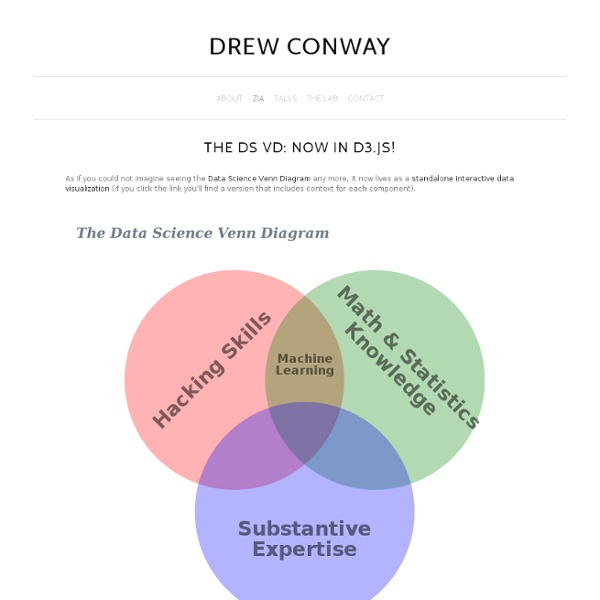What is Google Consumer Surveys? - Consumer Surveys Help
What is Google Consumer Surveys Google Consumer Surveys is a market research tool that allows market researchers to easily create online surveys in order to help make more informed business decisions. Users complete survey questions in order to access high quality content around the web, and publishers get paid as their users answer.
Triangular number
The first six triangular numbers A triangular number or triangle number counts the objects that can form an equilateral triangle, as in the diagram on the right. The nth triangle number is the number of dots composing a triangle with n dots on a side, and is equal to the sum of the n natural numbers from 1 to n. The sequence of triangular numbers (sequence A000217 in OEIS), starting at the 0th triangular number, is:
Analyzing Network Characteristics Using JavaScript And The DOM, Part 1
Rethinking Mobile Tutorials: Which Patterns Really Work? Pattern libraries are a great source of inspiration and education for designers. But common practice doesn’t always equal best practice. In this post, we’ll look at why many common tutorial patterns are ineffective and how you can leverage game design principles to increase user engagement. After the release of the first edition of Mobile Design Pattern Gallery, Intuit asked me to speak with its mobile team.
Floyd–Warshall algorithm
. A single execution of the algorithm will find the lengths (summed weights) of the shortest paths between all pairs of vertices, though it does not return details of the paths themselves. The Floyd–Warshall algorithm was published in its currently recognized form by Robert Floyd in 1962. However, it is essentially the same as algorithms previously published by Bernard Roy in 1959 and also by Stephen Warshall in 1962 for finding the transitive closure of a graph.[1] The modern formulation of Warshall's algorithm as three nested for-loops was first described by Peter Ingerman, also in 1962. The algorithm is an example of dynamic programming.
Reed's law
Reed's law is the assertion of David P. Reed that the utility of large networks, particularly social networks, can scale exponentially with the size of the network. The reason for this is that the number of possible sub-groups of network participants is 2N − N − 1, where N is the number of participants. This grows much more rapidly than either
Mint Digital's tech blog
Collabify – everyone curates the party playlist May 10, 2012 § Last night was the first Music/Tech meetup. It went really well and we had a blast.
DiffRank
Omar Odibat and Chandan K. Reddy Networks have been extensively used to model various complex systems such as online social networks, co-authorship and citation networks and gene networks. Due to different kinds of variations such as temporal, spatial, topic and phenotypic variations, several variants of the same network may exist. For several practical problems, identifying the nodes that are changing between the networks provide vital information regarding the dynamics of the network states. Given two networks where the nodes are the same in both networks, but the edges are different, we consider the problem of identifying a set of hubs that best explain the differences between the two networks.
Metcalfe's law
Two telephones can make only one connection, five can make 10 connections, and twelve can make 66 connections. Metcalfe's law states that the value of a telecommunications network is proportional to the square of the number of connected users of the system (n2). First formulated in this form by George Gilder in 1993,[1] and attributed to Robert Metcalfe in regard to Ethernet, Metcalfe's law was originally presented, circa 1980, not in terms of users, but rather of "compatible communicating devices" (for example, fax machines, telephones, etc.)[2] Only more recently with the launch of the Internet did this law carry over to users and networks as its original intent was to describe Ethernet purchases and connections.[3] The law is also very much related to economics and business management, especially with competitive companies looking to merge with one another. Network effects[edit]
Terminal Concepts in GNU/Linux
Copyright © 2003 Charles M. "Chip" Coldwell. Terminal Concepts in Linux Introduction
View model
The TEAF Matrix of Views and Perspectives. A view model or viewpoints framework in systems engineering, software engineering, and enterprise engineering is a framework which defines a coherent set of views to be used in the construction of a system architecture, software architecture, or enterprise architecture. A view is a representation of a whole system from the perspective of a related set of concerns.[1][2] Since the early 1990s there have been a number of efforts to prescribe approaches for describing and analyzing system architectures. These recent efforts define a set of views (or viewpoints).
Thinking Networks II
First presented to The Developing Group on 3 June 2006 (an earlier version, Thinking Networks I, was presented on on 5 June 2004) Thinking Networks II James Lawley Contents
Dagger vs. Guice - Floating Sun
If you are familiar with dependency injection and you are in Java-land, you've probably heard of Google Guice. You may even have heard of this new D-I framework from the fine folks at Square, called Dagger. We have a sizeable codebase that uses Guice heavily, but I'm a sucker for shiny new things so I started playing with Dagger to see what it would take to migrate away from Guice. Read on to learn more. Why Dagger?



